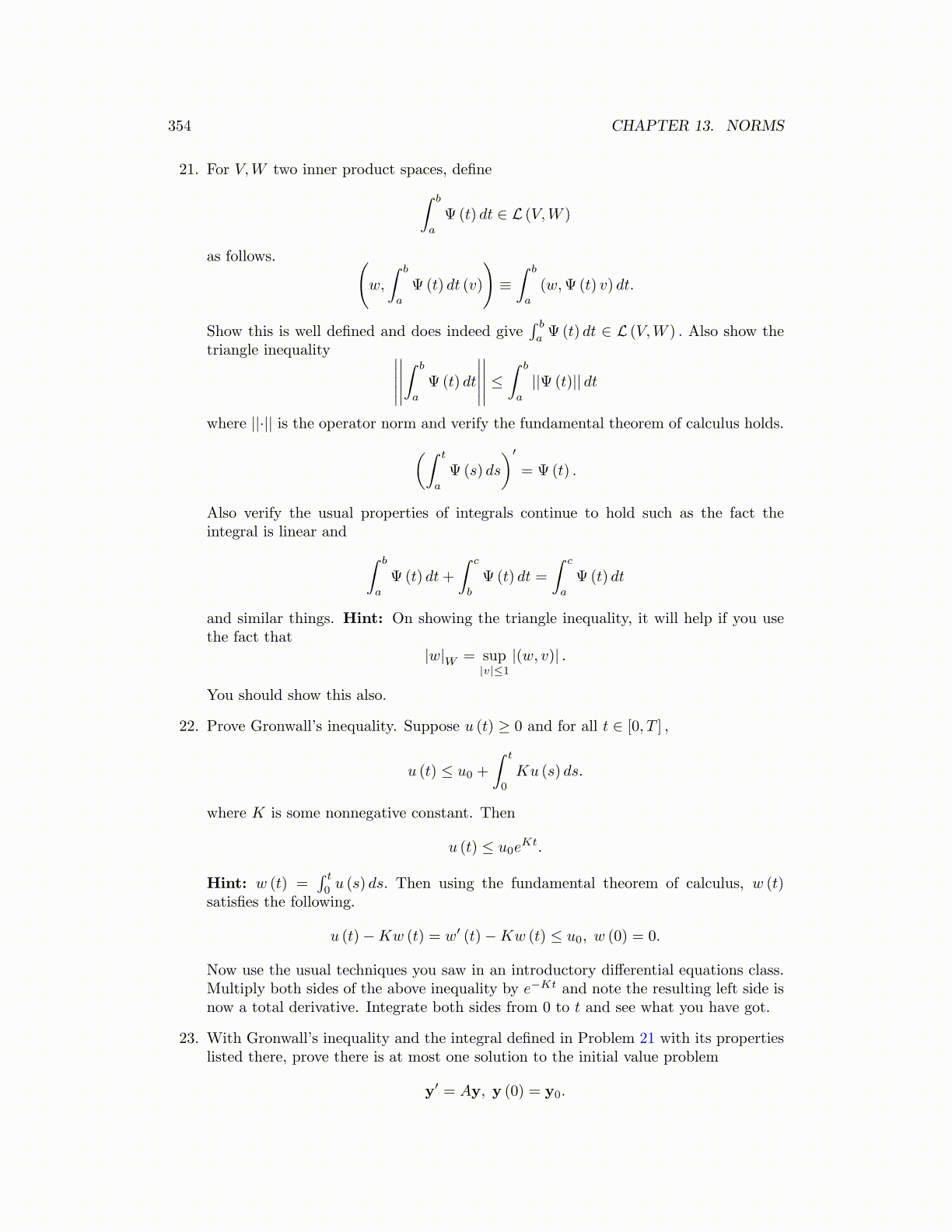
354 CHAPTER 13. NORMS
21. For V,W two inner product spaces, define∫ b
a
Ψ(t) dt ∈ L (V,W )
as follows. (w,
∫ b
a
Ψ(t) dt (v)
)≡∫ b
a
(w,Ψ(t) v) dt.
Show this is well defined and does indeed give∫ b
aΨ(t) dt ∈ L (V,W ) . Also show the
triangle inequality ∣∣∣∣∣∣∣∣∣∣∫ b
a
Ψ(t) dt
∣∣∣∣∣∣∣∣∣∣ ≤
∫ b
a
||Ψ(t)|| dt
where ||·|| is the operator norm and verify the fundamental theorem of calculus holds.(∫ t
a
Ψ(s) ds
)′
= Ψ(t) .
Also verify the usual properties of integrals continue to hold such as the fact theintegral is linear and ∫ b
a
Ψ(t) dt+
∫ c
b
Ψ(t) dt =
∫ c
a
Ψ(t) dt
and similar things. Hint: On showing the triangle inequality, it will help if you usethe fact that
|w|W = sup|v|≤1
|(w, v)| .
You should show this also.
22. Prove Gronwall’s inequality. Suppose u (t) ≥ 0 and for all t ∈ [0, T ] ,
u (t) ≤ u0 +
∫ t
0
Ku (s) ds.
where K is some nonnegative constant. Then
u (t) ≤ u0eKt.
Hint: w (t) =∫ t
0u (s) ds. Then using the fundamental theorem of calculus, w (t)
satisfies the following.
u (t)−Kw (t) = w′ (t)−Kw (t) ≤ u0, w (0) = 0.
Now use the usual techniques you saw in an introductory differential equations class.Multiply both sides of the above inequality by e−Kt and note the resulting left side isnow a total derivative. Integrate both sides from 0 to t and see what you have got.
23. With Gronwall’s inequality and the integral defined in Problem 21 with its propertieslisted there, prove there is at most one solution to the initial value problem
y′ = Ay, y (0) = y0.